A few months ago Appalachia was trending on Twitter; someone was explaining what makes the mountain range unique, diving into some of the geographical data on the Appalachians, trying to conceptualize just how fucking old this spine is. It’s difficult to imagine, but this range contains some of the oldest mountains in the world. Even comparisons fail; for example, the Rocky Mountain range was formed about 80 million years ago. The Appalachians? 480 million years ago.
All this orogen history has to mean something. These mountains know a thing or two.
As a southerner with a vested interest in Appalachia, who is eagerly awaiting the full debut of Lee Mandelo’s Summer Sons (more on that later), I took it upon myself to pull together a short list of Appalachian speculative lit. To be fair, there is… not much. While there are plenty of magical stories set across the Americas, finding representations specifically Appalachian magic proved a little tougher. But we have a few to offer.
John the Balladeer by Manly Wade Wellman
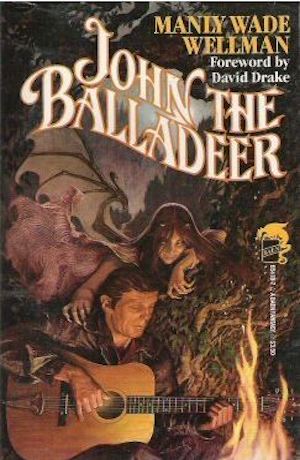
We’ll start with some of the original speculative lit from the area: John the Balladeer. This character was created by Manly Wade Wellman, a prolific SFF writer across genres, who published a series of fabulist short stories and novels in the mid-twentieth century starring this Appalachian wanderer. Also called Silver John stories, these books dive into folk beliefs and magic of the mid-1800s—from old Appalachian traditions of sin-eating to creatures like the Behinder—Wellman explores the Western Carolinas with an ear towards the mythic. Silver John himself is a storyteller; a man with silver strings on his guitar, who wanders through the region, picking up stories and legends for his ballads. The books are hard to find, but worth it: I recommend the complete short story collection, Who Fears the Devil? (bonus points if you can get your hands on the edition with illustrations by Wellman himself) and The Lost and the Lurking, one of the Silver John novels.
The Tufa Novels by Alex Bledsoe
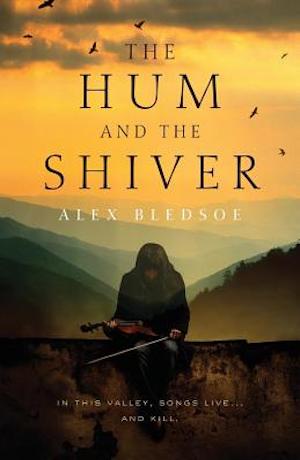
Another series of books that helped put Appalachian folklore (beyond the family saga coal mining novels) on the literary map is the contemporary Tufa Collection. While some of the supernatural elements of The Hum and the Shiver are more original to author Alex Bledsoe’s personal mythology than the Appalachian folklore, the vibe is still on point. With excellent work done within the book to flesh out the kinds of characters you might find in Appalachian stories (the preacher, the singer, the mysterious people in the woods), this series is more archetypal than archivist. However, it’s five books and it’s got a lot of magic, intrigue, and mystery, and the descriptions of the spooky woodlands of mountained Tennessee make the Tufa Collection absolutely worth picking up.
Ghost Days by Asher Elbein
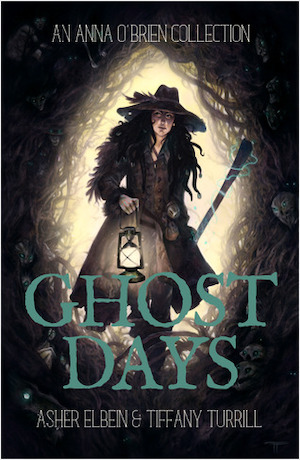
If you’re looking for folkloric magic and you want to stick to the source material (as much as there is passed down, such are the old ways) check out Asher Elbein’s Ghost Days, which is accompanied by fantastic illustrations by horror-fantasy artist Tiffany Turrill. Seeped in old-school magic and folklore, this book is absolutely faithful to the old-time stories, perhaps even more so than the Balladeer, which combined science-fiction sensibilities with North Carolina hill lore. We follow Anna O’Brien, an Appalachian conjure woman, in a series of short stories as she travels through the region, interacting with haints, hags, and the horrors that haunt the highlands. With wonderful attention given to the old warnings and characters who whisper low as sorghum molasses in your ear, Ghost Days is for fans of the podcast Old Gods of Appalachia and folks who want to remember what others forgot.
The Twisted Ones by T. Kingfisher
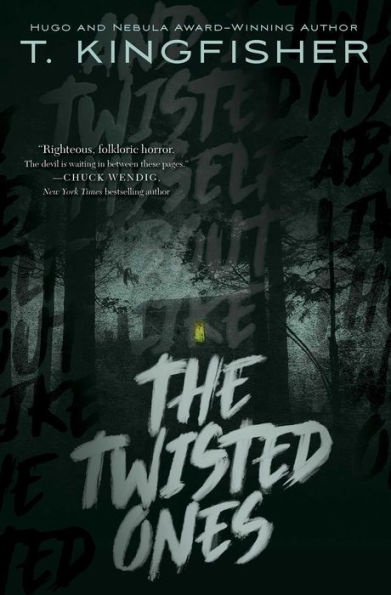
The Twisted Ones also has more vibes than traditional folklore, but the writing in this piece is haunting and the story is wonderful. Focusing on the strange in-between-ness of hollers, this book follows a young woman as she tries to clean out her grandparents’ hoarded-out home after their passing, only to find it desperately haunted. With a very good, very dumb, only occasionally brave dog as one of the main parts of this book, there’s something incredibly endearing about a fish-out-of-water lowlander coming into the highlands of Appalachia, and finding themselves entirely and utterly out of their league.
Every Bone a Prayer by Ashley Blooms
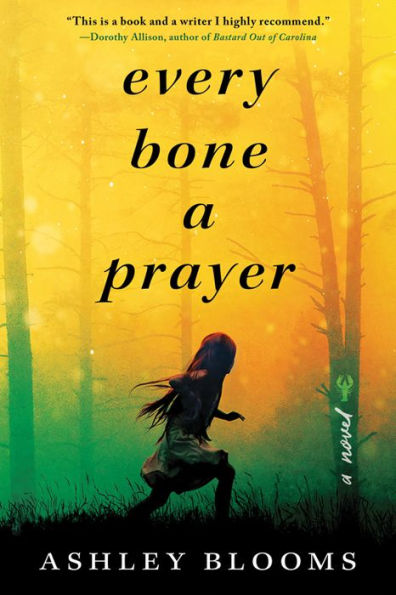
A very recent publication set in Appalachia is Every Bone a Prayer by Ashley Blooms. This book deals with some heavy stuff, so read the content warnings carefully. It also deals with them beautifully, taking on a magical response to trauma through the eyes of a child. An inheritor to the old tales, this fable feels like a ghost story you’d hear passed down in your family. It feels natural, it feels like something that’s deeply indebted to the old stories by being something totally unique. Seeped in faith and haunted by ghosts, Every Bone a Prayer demonstrates Blooms’ deep understanding of the region that comes out in evocative prose, slipstream magic, and nuanced characters, making this book an incredible, if heartbreaking, read.
Summer Sons by Lee Mandelo
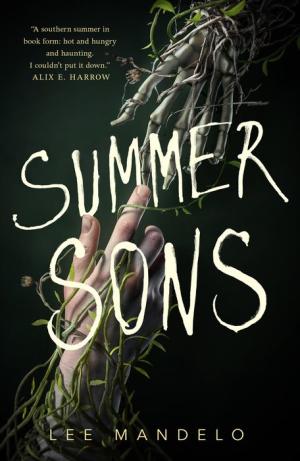
Now we get to the book that inspired me to write this list—Summer Sons by Lee Mandelo. This book combines the fervor of dark academia (think The Secret History) with the haunted hills of eastern Tennessee. Featuring an exceptionally queer cast of boys that are both in and out of the closet, this book is about the people living in Nashville (and its surrounds) right now. This is about the stories they were told, the haints that swing in blue bottles, the graves that are always disturbed no matter how many generations pass over. Another book that feels like it’s taken the mantle of Appalachian storytelling and woven something entirely different with all the same core elements intact, Summer Sons should be on everyone’s list.
Linda H. Codega is an avid reader, writer, and fan. They specialize in media critique and fandom and they are also a short story author and game designer. Inspired by magical realism, comic books, the silver screen, and social activism, their writing reflects an innate curiosity and a deep caring and investment in media, fandom, and the intersection of social justice and pop culture. Find them on twitter @_linfinn.










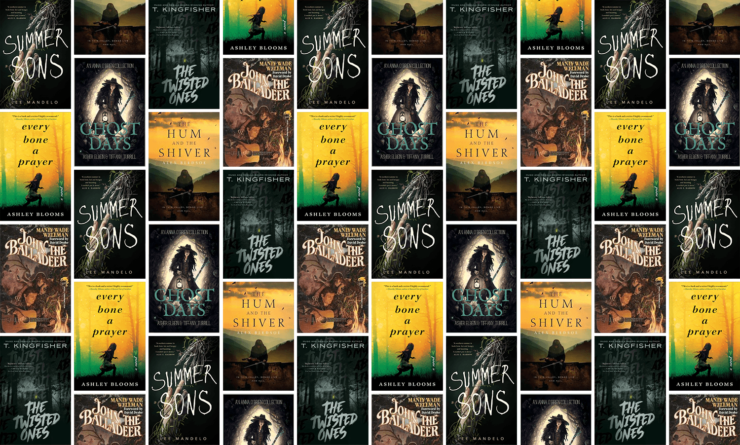
One small edit: Who Fears the Devil is not the complete short stories; John the Balladeer is.
“Orogen” I just learned a new word.
One of my regrets is never meeting Manly Wade Wellman. Stellarcon invited him a number of times, but his health was too poor. I have a number of his first editions including his kid historical novels.
So, I just went through my reading and review list to find novels set in my home state’s mountains, and I found these.
QUIET THE DEAD, Morgan James. “Promise McNeal” paranormal mystery. Retired as a psychologist because of burn-out, Promise moves to a tiny town in the mountains of western North Carolina. She starts getting dreams seemingly from a dead person and is drawn into several other mysteries including a murder while helping an attorney friend in Atlanta by using her “intuition.” Somehow, the dreams seem to be leading her toward solutions.
STEALING SHADOWS, Kay Hooper. The first Bishop/Special Crimes unit novel. Paranormal suspense with a central romance. Cassie Neill is able to connect mentally with serial killers, but the price is so great she flees to a small town in North Carolina when her aunt leaves her her home. Soon, however, she connects mentally with a budding, local serial killer. She warns the sheriff, but it is the local DA Ben Ryan who listens to her. Then the killings start. A nice novel with atmospheric details and a clever use of writing to keep the reader guessing. This is a long running series with a bunch of the novels dealing with the horror absorbed into the mountains which spawns human killers.
THE RED CHURCH, Scot Nicholson. Horror. I’ve never read it, but it received a lot of good reviews. A number of his horror novels are set in the mountains of North Carolina.
More of Many Wade Wellman’s “southern” supernatural stories can be found in the groundbreaking Carcosa Press collection “Worse Things Waiting,” which has recently been reprinted in trade paperback by Shadowridge Press (and includes the terrifying Lee Brown Coye illustrations).
It has been noted elsewhere that Wellman disliked the name “Silver John” for the character, and he preferred “John the Balladeer.”
My late friend Tom Deitz penned a series set in the Blue Ridge mountains of north Georgia, starting with Windmaster’s Bane. To be fair, it’s more bound up in classic Irish mythology than Appalachian folklore, but the former encompasses many of the elements of the latter. I was pleasantly surprised to see the entire series is still available on Kindle.
This list is excellent, “Old Gods of Appalachia” should definitely be included. It’s an original fiction audio drama focusing specifically on the regional history and what lurks beneath the mountains.
A good one-off novelette set in the Appalachians (I think?) is “The Queer Ones”, by Leigh Brackett. It’s not that well known, but it is one of her best stories.
Every Bone a Prayer is fantastic. Looking forward to reading the rest.
David Drake’s Old Nathan stories tap into much the same vein, I do believe.
So: would some Appalachian SFF qualify as “folk horror,” then?
Wellman: “…magic of the mid-1800s”? Aren’t these stories set in the 1930s-1950s? There are references to Model Ts and rock n’ roll, if I remember correctly… BTW A small press was supposedly re-releasing ALL the John the Balladeer stories and novels, but they announced that five years ago and I heard the deal with the estate recently expired. Hope someone else picks them up!
@@.-@ — I remember the Tom Dietz books! I never read the entire series but I read at least the first four or five as they were coming out back in the day.
I have a tattered but treasured copy of the Ballantine Books paperback edition of “Who Fears the Devil?”. On one front page is the source for the title:
“Who fears the Devil?” says James unto Jim,
“Who fears the Devil?” says Jim unto Joan,
“Who fears the Devil?” says Joan unto John–
“Not I! Not I! says John all alone.”
___from a game song, once popular with Southern children.
Jeff Zee @10, the stories in “Who Fears the Devil” were first published in “The Magazine of Fantasy and Science Fiction” from 1951 to 1962. There are references in the stories to John serving in the US Army overseas and I have read that Wellman referred to John as a Korean War veteran.
tonyz #8, David Drake’s “Old Nathan” stories are great, though much grimmer in tone (no surprise coming from Drake).
I’m thinking of Terry Bisson’s “Talking Man” (1986). It’s sort of about a wizard who runs a junkyard in very rural Kentucky, so I suppose it counts.
Sharyn McCrumb has a series of novels based on Appalachian ballads. The more recent ones are historicals of one sort or another, but the early ones are ~contemporary and include an old woman who may just have very good intuition or may actually be a seer. I don’t know the region well enough to judge how good a representation they are, but they feel real and it’s her home area.
Omitting R.S. Belcher’s Nightwise books is a pretty egregious oversight here
A decent fraction of Howard Waldrop’s stories qualify as very good examples of the subgenre as well.
First, I’d also highly recommend the extended “Windmaster” series by Tom Deitz – very few writers in my experience have done as well in blending multiple mythologies, as has Deitz in commingling Celtic and Native American folklore (mostly Cherokee, although I think there are some additional resonances and references in some of the side stories).
Second, a brand new and likely-to-be-controversial book that fits the category is Mercedes Lackey’s Jolene, newest in her “Elemental Masters” series of novels retelling classic fairy tales in (mostly) Victorian settings. This latest entry is an outlier in a couple of respects – the locale shifts from England to Tennessee coal mining country, and Lackey draws not on Grimm or Lang but on the Slavic legend of the Queen of the Copper Mountain. And also yes, there’s a clear degree of influence from the famous Dolly Parton song.
On the plus side, the geographical and cultural shifts both bring a degree of freshness to the book – for the first time in quite a long while, its author is exploring relatively new thematic ground, though the plot retains the fairy-tale template typical of most of this series’ entries. This is balanced by a serious drawback: the novel is written entirely in a heavy, none too readable attempt at Appalachian dialect that just doesn’t quite work. I’ve often described the appeal of Lackey’s writing as a function of “sheer narrative force”, the ability she demonstrates to get readers to invest emotionally in the situations and characters she describes. Here, the dialect has the effect of greatly muting that narrative energy, and that’s a choice that does Lackey no favors.
I will usually recommend any given Mercedes Lackey novel as enjoyable light fare irrespective of perceived “literary nutritional value”. In this case I find myself torn: I’d frankly like to hear some thoughtful assessments from readers knowledgeable about the particular aspects of Appalachian (and Russian/Slavic) folklore she’s borrowed. But I’d hesitate to hand this one to a general fantasy reader without some cautionary words, because I find the dialect just too much of a barrier to the story behind and beneath it.
The Devil and Preston Black by Jason Jack Miller. It’s the first in a series called Murder Ballads and Whisky. It features a lot of Appalachian folk lore along with the requisite deal with the devil
I have not yet read Jolene and I am sorry to hear @14.’s comment on the language. I have noted before Ms. Lackey’s inability to successfully parrot (pun intended based on her involvement with birds) dialect, and I am sorry to read this comment as I am a BIG Lackey fan; I own hardcopy copies of most of her books so I do “put my money where my mouth is” and contribute to the author’s well being and survival. I, having had the misfortune to reside for a time in Oklahoma, but knowing and honoring the Osage and other native people greatly, had hoped that her prior local ethnic effort in Sacred Ground might simply be chalked up to a one-off, early venture. I am now of mixed mind whether to bother with Jolene; perhaps I shall wait until the local (Appalchian) library obtains a copy which will be a while as, frankly, the only place I have found almost as benighted intellectually as Oklahoma is the entire Appalachian region from southern NY right on south to Alabama.
Howdy, y’all!
This is a fantastic post; I only wish it were longer! To refute the comment by “JeffZee“, the 1000+ page, two-volume hardcover Haffner Press edition of THE COMPLETE JOHN THE BALLADEER (19 stories and 5 novels!) by Manly Wade Wellman is an active title and statements about it’s demise are patently false! (and it’s only been three years, Jeff . . .) :)
The book is ready to go to press save for one marvelous detail: the John Hays Library at Brown University in Providence, RI will permit non-student/faculty researchers to visit beginning September 1st! So, yer humble Pooobah will finally be able to access the Wellman archive at Hays and see what additional enhancements can be added. The whole she-bang will be a 2021 release.
Also, all preorders for this title will be shipped with a 40-page bonus chapbook, NOT ALL A DREAM, which is the story Wellman sold for The Last Dangerous Visions. The cover by Tim Kirk is wonderful!
If you want news as it happens in re: THE COMPLETE JOHN THE BALLADEER, send us an email asking to be added to our e-newsletter list (FYI, a newsletter with news on this edition goes out later today).
Keep Watching the Skies!
Stephen Haffner
Big Poobah
HAFFNER PRESS
@10 A number of Wellman’s supernatural stories are set during the 19th century: several with Native American protagonists, and several during the Civil War (one of which, “The Valley Was Still,” was adapted for a Twilight Zone episode).
If we’re including comics, there’s Eric Powell’s entertaining if uneven Hillbilly, and the pulpy grindhouse series from Image, Grendel, KY, which is just what it sounds like.
William Gibson’s The Peripheral is largely set in Appalachia. And by an appalachian author..
@1: You are both right and wrong.
The edition of Who Fears the Devil? that the OP linked to doesn’t have all the short stories but this edition by Paizo has them all. I can confirm that because I’m a happy owner of one Paizo copy! :-)
I wish there were affordable copies of the novels, though.
@19: I’m glad to hear that Haffner Press makes them available again. Your books are awesome and beautiful! But they strain one’s pocket a little!
Anyway, I appreciate what you guys are doing. I love those complete editions.
“Summer Sons” sounds great! But point of order…
Nashville is MIDDLE Tennessee. Knoxville (where I live) is East (eastern) Tennessee. And Memphis, West Tennessee, is different from both. Very clear geographical and cultural demarcations between the three regions as well.
@19 – i’m on your mailing list but didnt receive an update?
I was following a horror webcomic years ago that abruptly stopped updating, and now I can’t remember the title. It’s set in Appalachia, and features magical goats, a group of estranged former friends who saw something awful as teens, a monster that lives in a storm that’s so scary that looking at it is equivalent to a literal punch in the eye (which gives you visions), tunnel fiends, and an annual ritual in which everybody who lives in town buries a dead chicken in a hole in their yard. But I can’t remember the name. Does this ring any bells for anybody out there?
@25 IKilledKenny: The Haffner Press e-newsletter got bumped to today. Hopefully you received it and liked what was announced.
@23 Jens Raab: Wait until what this newsletter can do to pocketbooks! ;)
@27: You got me intrigued, Stephen!
I tried to sign up to your e-newsletter but can’t seem to find where to that on the Haffner website.
Could you help me out?
Thanks!
Send me your email at info at haffnerpress dot com.
Latest newsletter (I’ll try this link and see if it comes through) here:
haffnerpress.com/8-30-2021-news.html
@27 – thanks – i received the newsletter.
and thanks for offering a more reasonable “trade” edition of John the balladeer (i can’t afford the limited editions). nonetheless, it’ll be the most i’ve ever paid for a non-textbook. look forward to it!
District 12 in the Hunger Games is in Appalachia.
Summer Sons sounds great, definitely adding it to my TBR. I loved the first Hum and Shiver novel and want to get back to that series; I live 45 minutes from the Blue Ridge Parkway so it always felt close to home to me.
Sarah Addison Allen writes books similar to Alice Hoffman, with female relationships and light magic, usually set in NC.
One author to watch out for is Nathan Ballingrud. Many of his stories are set in New Orleans, a place he loves, but he lives in Appalachia now and I just know it’s going to impact his writing.
For children, the Serafina series by Robert Beatty is pretty good, the first one takes place at the Biltmore Estate and adds magic.
Very cool post. Folks might also want to check out Lee Smith. Several of her books are set in the Appalachian region, although they are mostly historical fiction.
I agree with SeeingI that Nashville is in middle Tennessee. It not part of the Appalachian region.
It also drives me crazy when people mispronounce “Appalachia”. It is “Ap-puh-lach-uh”, like a latch on a door. NOT “Ap-puh-ley-chuh”.
I dashed to my bookshelf and sure enough, found Manly Wade Wellman’s novel “After Dark,” It’s an amazing piece of work; amazing, amusing, and chilling. Really, truly chilling.
I have yet to read the Tufa novels, but I ran across Tuatha Dea, a band that based several of their songs on the novels, on YouTube. I like the music, but I don’t know if they’re still around and putting more out. I’d heard that Alex Bledsoe liked their efforts.
The anthology Mountain Magic contains:
Old Nathan, by David Drake
Diamonds are Forever, by Eric Flint and Ryk E. Spoor
The complete Hogben Family stories by Henry Kuttner
That’s in the paperback. Baen doesn’t have permission to reproduce Kuttner’s stories on line.
So they substitute the stories of John the Balladeer, by Manly Wade Wellman.
Terrific list–I’ve read all but a couple and most of the suggestions in the comments. You might have also included “Revelator,” by Daryl Gregory, which just came out August 31. Wellman has definitely been a fave of mine for decades, so glad to see he has so many appreciative fans here.
#33: Thank you for that callout. I have mostly heard people use the pronunciation you note as incorrect (not perhaps surprising given that I’m in the Pacific Northwest), and will try to remember the proper one now, as I feel the same pain when non-Northwesterners pronounce my state’s name to rhyme with “gone” rather than “gun”.
The ‘Mad Mick’ series by Thomas Horton is great apocalyptic reading and it is in the Appalachian mountains of W. Virginia and in my mind, a must read because not only do you learn the area, but some history as well.
Sorry for the wrong first name on the Mad Mick series, it is Franklin not Thomas Horton
Road Out of Winter by Alison Stine won the Philip K Dick award last year, it’s about a woman trying to escape extreme poverty and an unending winter in Appalachian Ohio.
Great article! Unfortunately, though, The Twisted Ones doesn’t belong on the list. It’s set in southern central NC, vaguely near the Sandhills, and a couple hours away from the mountains. Mouse does drive through West Virginia (and would have had to drive through western NC) to get to her grandmother’s house, but the house isn’t located in Appalachia at all.
Heh. Well, I both stand by my prior comment about where The Twisted Ones is set, AND have discovered why it’s on a list of Appalachian speculative fiction. (I started reading it for the first time this morning. As a North Carolinian, and two chapters in, I was all “oh wait I know this one” when I read this article.) Mea culpa!
I am surprised beyond words that no one has mentioned Suzette Haden Elgin and *her* Appalachian SFF. Responsible of Brightwater is going to have a little talk with you. The Ozark Trilogy *should* be a classic, and I am dismayed beyond words that her work has apparently been forgotten.
#43: You’re absolutely right, we should indeed have remembered Elgin long since – I think I still own the Ozark books, in fact. If so, I think I have my airplane reading set for next week.